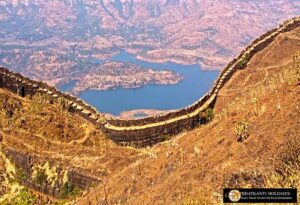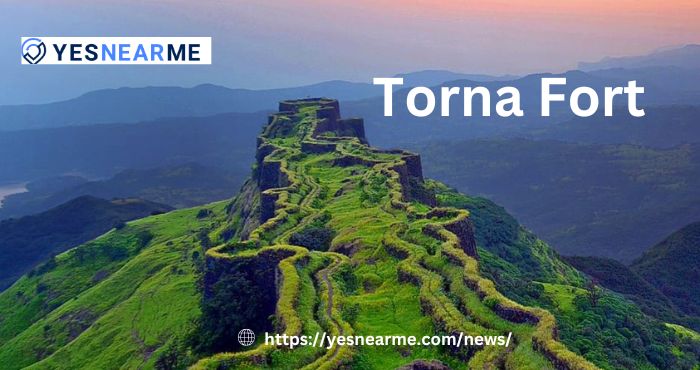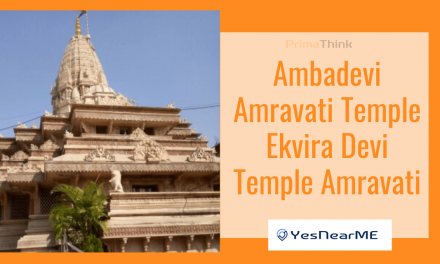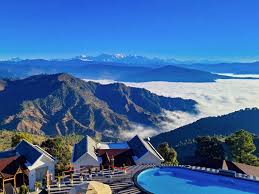Torna Fort

Introduction
Torna Fort, the highest fort in Pune’s Sahyadris, is a paradise for trekkers, history lovers, and adventure seekers. Rising to 1,403 meters, it was the first fort captured by Chhatrapati Shivaji Maharaj, marking the beginning of the Maratha Empire. The trek to Torna, starting from Velhe village, is a moderately difficult climb through rugged terrains and steep slopes, offering breathtaking panoramic views. Key attractions include Bini Darwaza, Zunjar Machi, Budhla Machi, and Menghai Goddess Temple.
The best time to visit is post-monsoon (September to February), when the lush greenery enhances the trekking experience. Torna also connects to Rajgad Fort, making it an excellent trail for seasoned trekkers. Whether you seek history, nature, or adventure, Torna Fort delivers an exhilarating experience. Don’t forget essentials like trekking shoes, water, and snacks to make the most of your journey. Embark on this thrilling trek and witness the grandeur of Pune’s highest fort.
Historical Significance

Torna Fort holds a distinguished place in Maratha history as the first fort conquered by Chhatrapati Shivaji Maharaj in 1646, marking the beginning of the Maratha Empire. At just 16 years old, Shivaji Maharaj demonstrated his military acumen by taking control of this massive fort, laying the foundation for his future conquests.
Strategic Importance
Torna Fort’s location in the Sahyadri mountain range made it a vital defensive structure, offering a commanding view of the surrounding terrain. The fort’s elevated position helped the Marathas monitor enemy movements and defend against invasions. Its proximity to Rajgad Fort, one of Shivaji Maharaj’s capital forts, further increased its significance in military campaigns.
Mughal Occupation and Recapture
During Aurangzeb’s Deccan campaign, the Mughals captured Torna Fort and renamed it Futulgaib. However, the Marathas, known for their guerrilla warfare tactics, later recaptured it, reaffirming their dominance over the region. The fort played a crucial role in the power struggles between the Marathas and the Mughals, witnessing multiple battles over the years.
Architectural Marvels and Fortifications
Recognizing the fort’s importance, Shivaji Maharaj fortified it with strong ramparts and bastions, many of which still stand today. The Zunjar Machi and Budhla Machi bastions are prime examples of Maratha military engineering, offering both defense and breathtaking panoramic views. The Bini Darwaza, Kothi Darwaza, and Konkan Darwaza served as key entry points, each designed for protection against enemy invasions.
Torna Fort in the Later Years
Even after Shivaji Maharaj’s reign, Torna Fort remained a significant stronghold in the Maratha Empire. It played a role in various battles and administrative changes during the Peshwa era, continuing to be a symbol of Maratha resilience and strength.
Legacy of Torna Fort
Today, Torna Fort stands as a monument to the courage and vision of Shivaji Maharaj. Trekkers and history enthusiasts visit to relive its glorious past and admire the remains of its majestic architecture, temples, and fortifications. The fort is not just a trekking destination but a place where history comes alive, narrating tales of valor, conquests, and the unbreakable spirit of the Marathas.
Trekking to Torna Fort

Trek Difficulty and Route
The trek to Torna Fort is considered to be of moderate to difficult level, making it an exciting challenge for trekkers. The ascent covers rocky terrains, steep climbs, and narrow pathways. The trek usually begins from Velhe village, which is approximately 50 km from Pune. It takes around 2.5 to 3 hours to reach the summit.
For experienced trekkers, an additional adventure awaits with the Rajgad to Torna trek, which connects two significant forts and offers a longer, more challenging trail.
Best Time to Visit Torna Fort
Torna Fort is a year-round trekking destination, but the ideal time to visit depends on the experience you seek. The best seasons for trekking are post-monsoon (September to February) and winter (November to February) due to the pleasant weather and breathtaking scenery. Each season offers a different experience, so here’s what you can expect throughout the year:
1. Post-Monsoon Season (September to November) – Best Time for Lush Greenery
- The landscape is covered in lush green vegetation, making it one of the most scenic times to visit.
- The waterfalls and small streams around the fort remain active, adding to the beauty.
- The weather is cool and refreshing, with temperatures ranging between 15°C to 25°C.
- The trekking trails, however, might still be slightly slippery due to the monsoon’s residual moisture, so proper trekking shoes are a must.
2. Winter Season (November to February) – Best for Comfortable Trekking
- The most comfortable season for trekking, with daytime temperatures ranging from 10°C to 20°C.
- Clear skies and crisp, cool air make for a refreshing hike with stunning views.
- This season is perfect for camping near the fort, as the weather is neither too hot nor too humid.
- Early mornings and nights can be chilly, so carrying warm clothing is recommended.
3. Summer Season (March to May) – Challenging but Rewarding
- Summers can be hot and exhausting, with temperatures reaching 35°C during the day.
- The dry terrain and lack of shade make it a tough trek, so carrying enough water and starting early in the morning is essential.
- Sunrises and sunsets during summer are breathtaking, offering clear panoramic views of the Sahyadri mountain range.
- Not the best season for first-time trekkers due to the intense heat and lack of water sources along the trail.
4. Monsoon Season (June to August) – Adventurous but Risky
- The fort is wrapped in clouds, creating a magical, misty atmosphere with waterfalls and streams in full flow.
- The trek becomes highly challenging due to slippery trails, strong winds, and heavy rainfall.
- Leeches and overgrown vegetation can make the hike difficult.
- Recommended only for experienced trekkers with proper rain gear and trekking shoes.
- For those who love the monsoon experience, visiting near the end of August when the rains are lighter can be a better option.
Attractions at Torna Fort

1. Bini Darwaza
The main entrance of the fort, Bini Darwaza, welcomes trekkers with its grand structure and historical significance.
2. Zunjar Machi and Budhla Machi
These are the two main bastions offering panoramic views of the Sahyadris. Budhla Machi, resembling an inverted pot, is a sight to behold.
3. Menghai Goddess Temple
Also known as Tornaji Temple, this temple is a peaceful spot for trekkers to rest and soak in the spiritual vibes.
4. Kothi Darwaza and Konkan Darwaza
These additional gateways to the fort provide stunning views and a sense of the fort’s architectural brilliance.
5. Water Reservoirs
There are a few water cisterns at the fort, providing fresh water for trekkers. However, carrying your own drinking water is always recommended.
How to Reach Torna Fort
Torna Fort is located near Velhe village, approximately 50 km from Pune, making it an accessible trekking destination for adventure enthusiasts. Whether you’re traveling by private vehicle or public transport, here’s how you can reach the base of the fort:
By Road
- From Pune: The most convenient way to reach Torna Fort is by road. You can drive or hire a cab to reach Velhe village, which serves as the starting point for the trek. The route via NH48 and Nasrapur–Velhe Road is scenic, passing through lush green landscapes and hilly terrains.
- From Mumbai: If you’re traveling from Mumbai, the distance is around 210 km, and it takes about 4.5 to 5 hours via the Mumbai–Pune Expressway and NH48. You can either take a private vehicle or a bus to Pune and then continue towards Velhe village.
- Parking Facility: If you’re driving your own vehicle, parking is available in Velhe village near the trek’s starting point.
By Public Transport
- Buses from Pune: The Maharashtra State Road Transport Corporation (MSRTC) runs buses from Swargate Bus Stand in Pune to Velhe village at regular intervals. The journey takes approximately 2 to 2.5 hours.
- Shared Cabs & Jeeps: If you miss the direct bus, you can take a bus from Pune to Nasrapur and then hire a shared jeep or cab to reach Velhe village.
- From Mumbai: Travelers from Mumbai can first take a train or bus to Pune and then proceed towards Velhe by bus or taxi.
By Train
- The nearest railway station is Pune Junction, which is well-connected to major cities like Mumbai, Bangalore, Delhi, and Hyderabad.
- From Pune Junction, you can take a bus or hire a cab to reach Velhe village.
By Air
- The nearest airport is Pune International Airport (PNQ), located about 65 km from Velhe village.
- From the airport, you can hire a taxi or take a bus to reach Pune city, and then continue your journey towards Velhe.
Additional Travel Tips
- Start early in the morning if you’re traveling by public transport, as bus frequency to Velhe village decreases in the afternoon.
- If traveling in a group, hiring a private cab from Pune is the most convenient and time-saving option.
- Stock up on essentials at Pune or Velhe village, as there are limited shops near the trekking base.
Essential Tips for Trekkers
- Wear sturdy trekking shoes for better grip.
- Carry ample water and energy snacks.
- Start early in the morning to avoid trekking in the scorching sun.
- Check the weather forecast before planning your trek.
- Travel in a group or with an experienced guide, especially if trekking for the first time.
- Pack a raincoat during monsoons as the weather can be unpredictable.
Nearby Attractions

If you have extra time, you can explore other historical sites and natural wonders near Torna Fort. These destinations offer a mix of history, adventure, and breathtaking landscapes, making them perfect additions to your itinerary.
1. Rajgad Fort (15 km away)
Rajgad Fort, once the capital of the Maratha Empire for over 26 years, is a must-visit for history enthusiasts. The fort played a crucial role in Shivaji Maharaj’s early military campaigns and is known for its grand architecture, massive walls, and strategic location. The trek to Rajgad is moderately challenging but rewarding, offering stunning views of the Sahyadri ranges. Key attractions inside the fort include:
- Suvela Machi – A long, narrow fortified ridge with panoramic views.
- Padmavati Machi – Houses temples, water cisterns, and remnants of Shivaji Maharaj’s palace.
- Sanjeevani Machi – A strong defensive structure with multiple layers of fortifications.
2. Sinhagad Fort (50 km away)
One of the most famous forts near Pune, Sinhagad Fort is known for its historic battle in 1670, where the Marathas, led by Tanaji Malusare, bravely fought and reclaimed it from the Mughals. The fort provides breathtaking sunrise and sunset views, making it a favorite spot for trekkers and photographers. Visitors can also enjoy local delicacies like pithla bhakri and kanda bhaji at the small eateries on the fort. Must-visit points at Sinhagad Fort include:
- Tanaji Malusare Samadhi – A memorial dedicated to the brave Maratha warrior.
- Kondhana Caves – Ancient rock-cut caves adding a mystical charm to the fort.
- Pune Darwaza & Kalyan Darwaza – Historic gateways offering insights into Maratha architecture.
3. Madhe Ghat Waterfalls (30 km away)
If you’re looking for a serene natural retreat, Madhe Ghat Waterfalls is an excellent spot. Hidden within the Sahyadri hills, this mesmerizing waterfall is a perfect place to relax after a long trek. During monsoons, the gushing water cascades from over 850 meters, creating a spectacular view. It is also historically significant as it is said to be the route where Shivaji Maharaj’s soldiers carried the body of Narveer Tanaji Malusare after the Battle of Sinhagad.
4. Raigad Fort (90 km away)
Raigad Fort, the official capital of the Maratha Empire, is one of the most iconic forts associated with Shivaji Maharaj. Located at a higher altitude, it offers majestic views of the Western Ghats. You can reach the fort by trekking or using the Raigad Ropeway, which provides a thrilling ride up the mountains. Major attractions at Raigad Fort include:
- Maha Darwaja – The massive entrance gate showcasing Maratha grandeur.
- Raj Bhavan – The remains of Shivaji Maharaj’s palace.
- Takmak Tok – A cliff offering breathtaking views and historic significance.
- Shiv Samadhi & Jagdishwar Temple – The final resting place of Chhatrapati Shivaji Maharaj.
5. Panshet Dam (40 km away)
For those who love water sports and scenic landscapes, Panshet Dam is an ideal getaway. Surrounded by lush green hills, the dam offers activities like boating, kayaking, and jet skiing. It’s a great place to unwind after an adventurous trek to Torna Fort.
6. Bhatghar Dam & Nira-Deoghar Dam (50 km away)
These picturesque dams are perfect for a peaceful retreat, offering scenic backdrops and excellent picnic spots. The serene atmosphere and cool breeze make them ideal places to relax and enjoy nature.
Conclusion
Torna Fort is not just a trek but an unforgettable experience that blends adventure, history, and scenic beauty. Whether you’re a seasoned trekker or a history enthusiast, conquering Pune’s highest fort will leave you with cherished memories.
Standing tall with its rich history and rugged terrain, Torna Fort offers an unparalleled trekking experience that challenges and rewards you in equal measure. The fort’s breathtaking viewpoints, ancient architecture, and serene temples make it more than just a hiking destination—it’s a journey back in time. As you navigate its trails and soak in the panoramic views, you’ll truly appreciate the courage and vision of Shivaji Maharaj.
Whether you visit for an adrenaline rush, a dose of history, or simply to marvel at nature’s beauty, Torna Fort will leave a lasting impression on your heart. So gather your fellow adventurers, embrace the thrill, and conquer the mighty Torna Fort.







Recent Comments